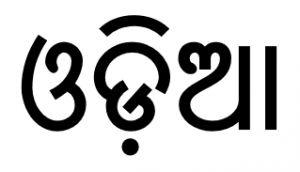Language/Odia/Grammar/Consonants
| ◀️ Vowels — Previous Lesson | Next Lesson — Basic Syllable Formation ▶️ |
In the previous lesson, we learned about the Odia vowels and their pronunciation. In this lesson, we will learn about the Odia consonants and their written forms. Consonants are a crucial part of the Odia language, and understanding them is essential for both reading and writing in Odia.
Odia Consonants
The Odia alphabet has 31 consonants. Each consonant has a unique symbol and pronunciation. In the table below, you will find the Romanized transliteration, IPA, and English translation for each consonant in the Odia language.
| Odia | Pronunciation | English Translation |
|---|---|---|
| କ | /k/ | K |
| ଖ | /kh/ | KH |
| ଗ | /g/ | G |
| ଘ | /gh/ | GH |
| ଙ | /ŋ/ | NG |
| ଚ | /tʃ/ | CH |
| ଛ | /tʃh/ | CHH |
| ଜ | /dʒ/ | J |
| ଝ | /dʒh/ | JH |
| ଞ | /ɲ/ | NY |
| ଟ | /ʈ/ | T |
| ଠ | /ʈh/ | TH |
| ଡ | /ɖ/ | D |
| ଢ | /ɖh/ | DH |
| ଣ | /ɳ/ | N |
| ତ | /t/ | T |
| ଥ | /th/ | TH |
| ଦ | /d/ | D |
| ଧ | /dh/ | DH |
| ନ | /n/ | N |
| ପ | /p/ | P |
| ଫ | /ph/ | PH |
| ବ | /b/ | B |
| ଭ | /bh/ | BH |
| ମ | /m/ | M |
| ଯ | /dʒ/ | Y |
| ର | /r/ | R |
| ଲ | /l/ | L |
| ଵ | /ʋ/ | V or W |
| ଶ | /ʃ/ | SH |
| ଷ | /ʂ/ | SH |
| ସ | /s/ | S |
It is essential to note that some consonants may have variations or are used together to form different sounds. For instance, the consonant combination "ଙ୍କ" is used to represent the sound "nk" as in the word "ବଙ୍କ". Similarly, the combination "ନ୍ତ" is used to represent the sound "nt" as in the word "ଆନ୍ତର୍ଜାତୀୟ".
Pronunciation
The pronunciation of each consonant is essential to learn for speaking and understanding Odia. Some of the consonants have sounds similar to English, like "k," "g," and "d." Others may be less familiar, such as "n̪" and "ʃ."
It is crucial to focus on the correct pronunciation of each consonant, especially the ones that are not used in English. The correct pronunciation of a consonant can make a big difference in the meaning of a word.
Written Forms
Each Odia consonant has a unique symbol that represents it when written. In the table above, you can see the written form of each consonant. When written, each consonant combines with a vowel to make a syllable.
The written form of the consonant also varies depending on the location of the consonant in a word. For example, the written form of "କ" will change when it appears at the beginning, middle, or end of a word.
Practice
To practice the Odia consonants, try reading and writing some Odia words on your own. You can start with simple words and work your way up to more complex ones. Practice is vital for mastering the pronunciation and written forms of Odia consonants.
Here are some words to get you started:
- ଘଡ଼ି (clock)
- ତରକାରୀ (vegetable)
- ମଗଶ (fish)
Summary
In this lesson, we learned about the Odia consonants, their pronunciation, and their written forms. We also saw that some consonants have variations and are used together to form different sounds in words. Proper pronunciation and written form are essential for mastering the Odia language. Practice using simple words to improve your understanding of the Odia consonants. In the next lesson, we will learn about basic syllable formation in Odia.
Videos
Basic English grammar // vowel, consonant,odia sound of vowels ...
Learn to write Oriya/odia alphabets - Consonants - YouTube
Other Lessons
- Word Formation
- Basic Prepositions
- Past Tense
- How to Use Be
- Questions
- 0 to A1 Course
- Plurals
- Conditional Mood
- Basic Adjectives
Sources
| ◀️ Vowels — Previous Lesson | Next Lesson — Basic Syllable Formation ▶️ |

